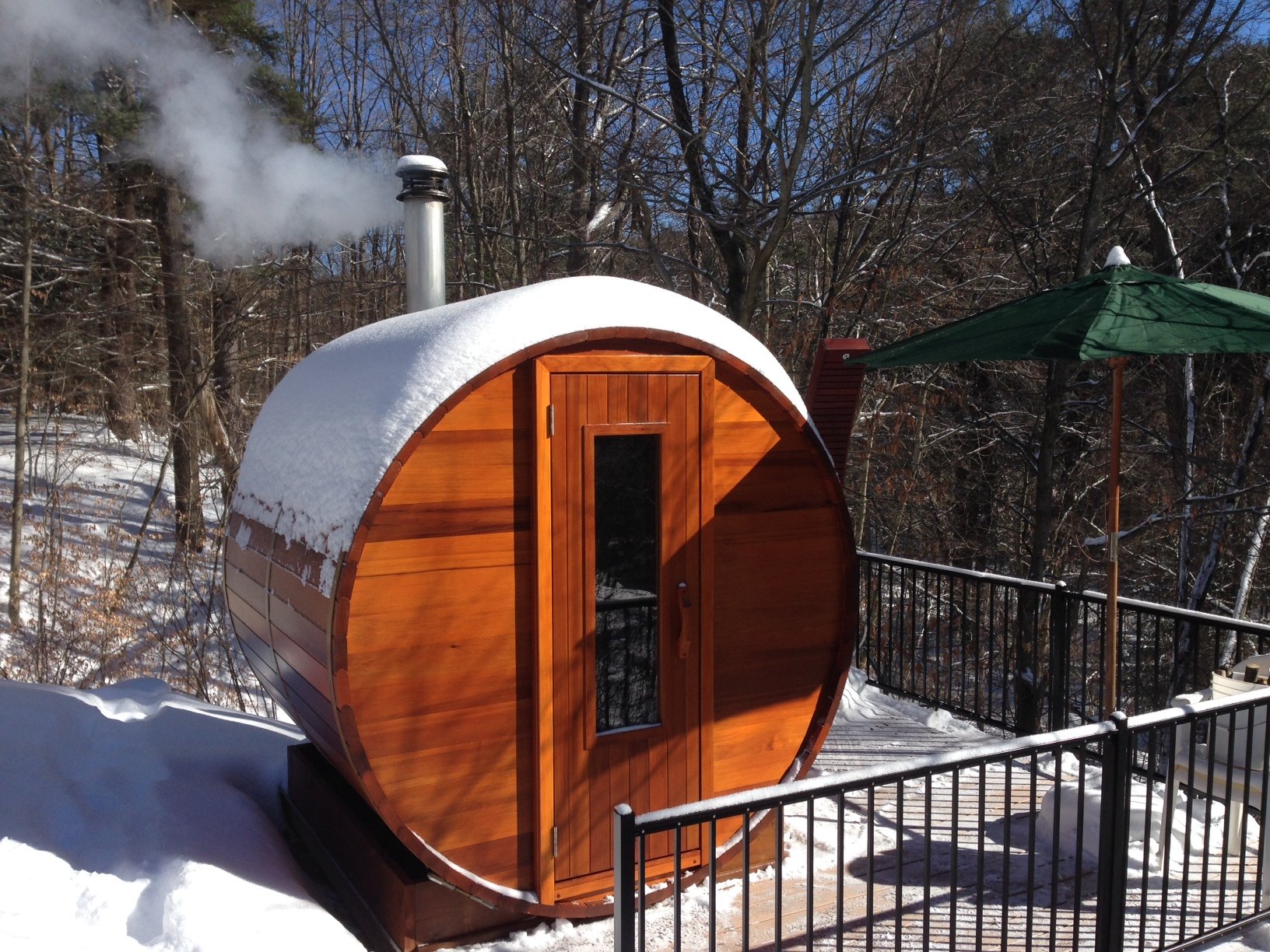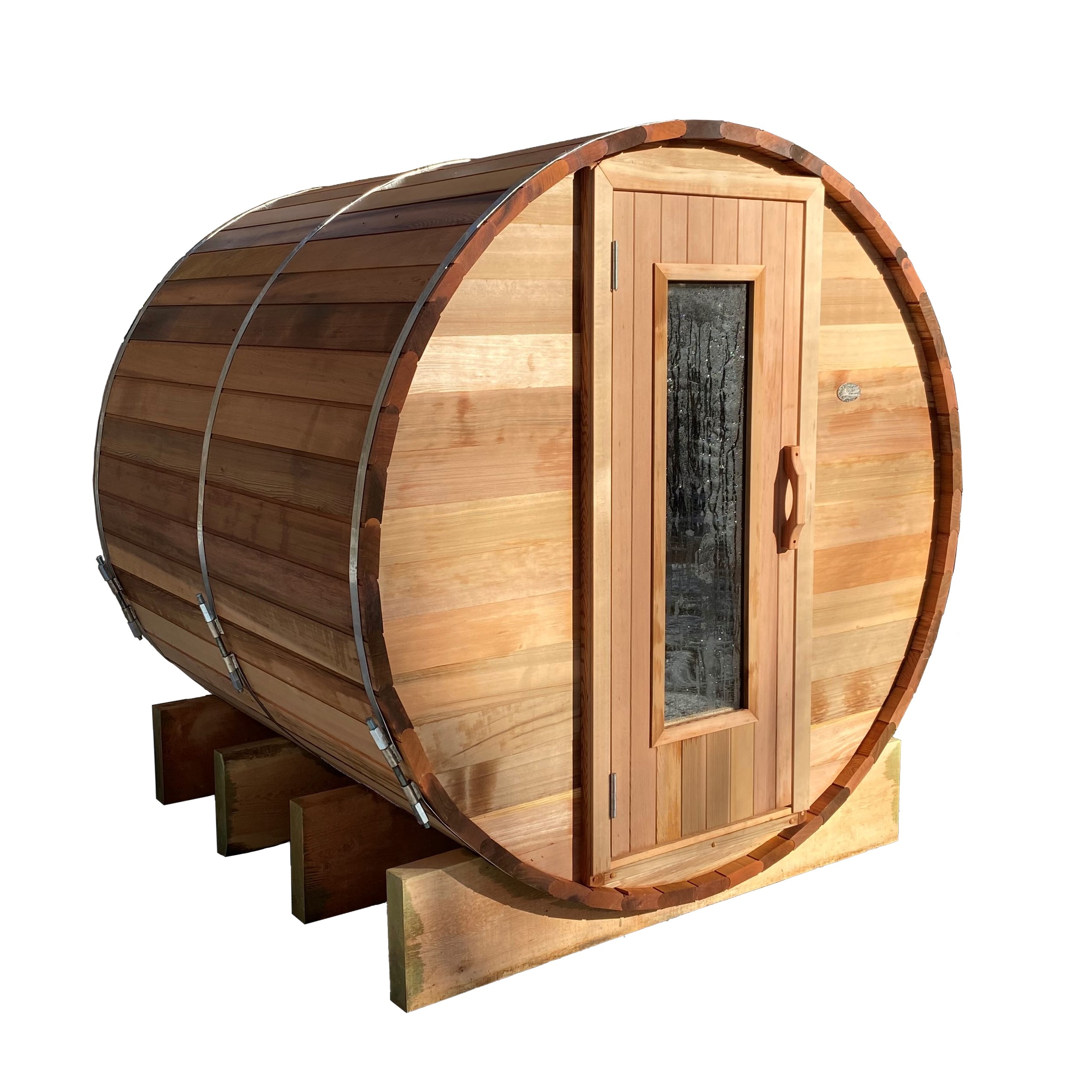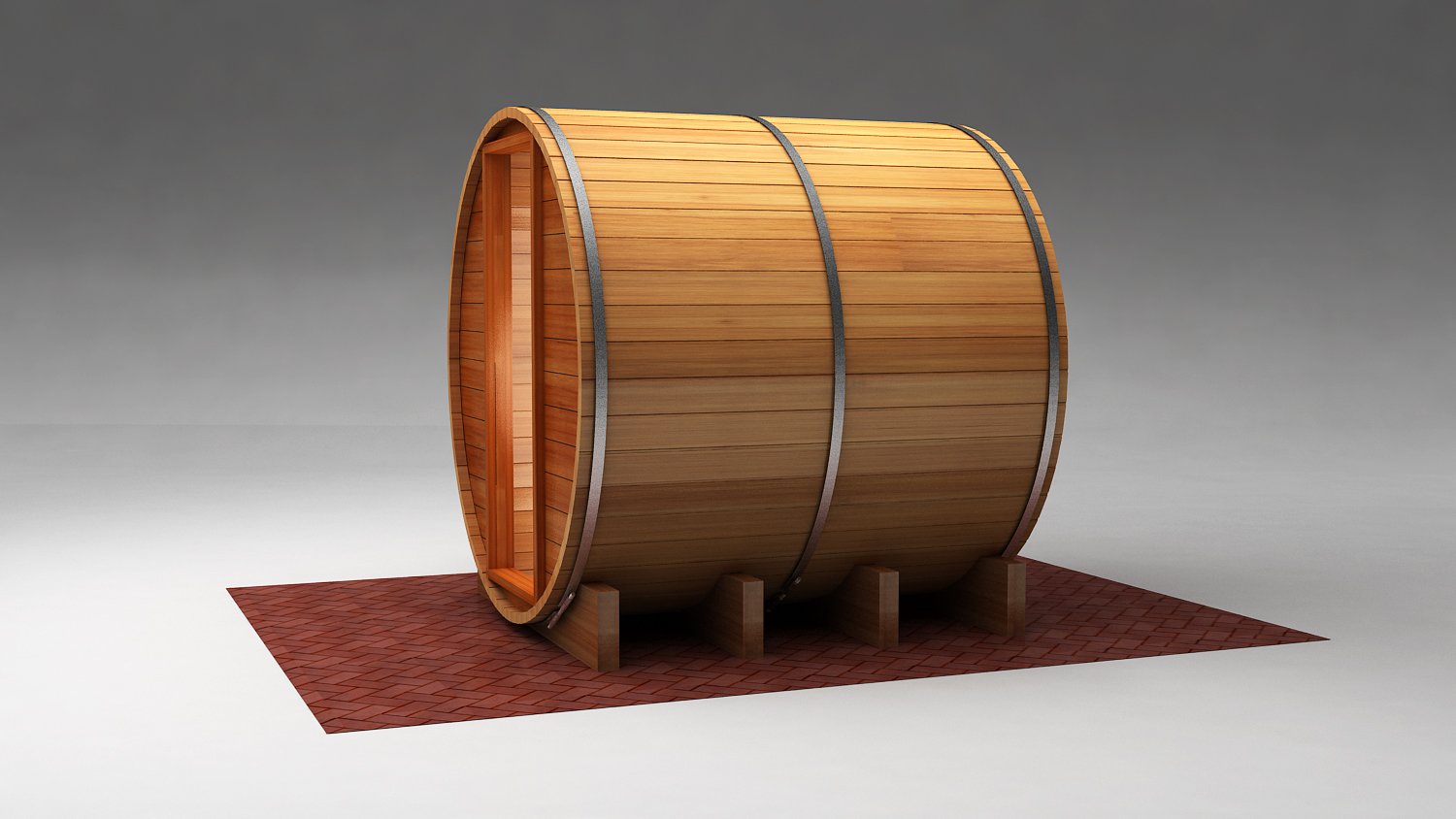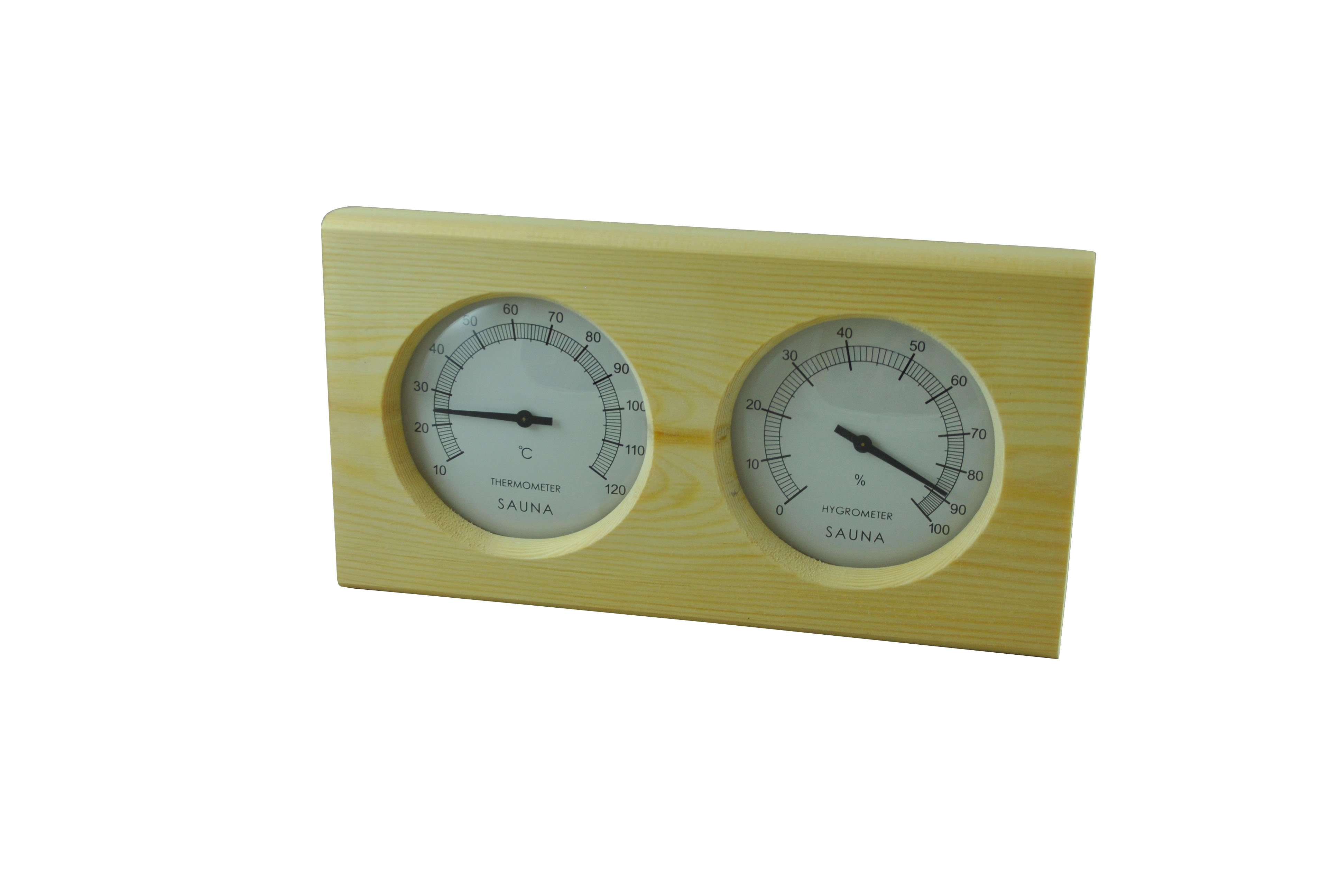Sauna Rooms
Building a Sauna Room
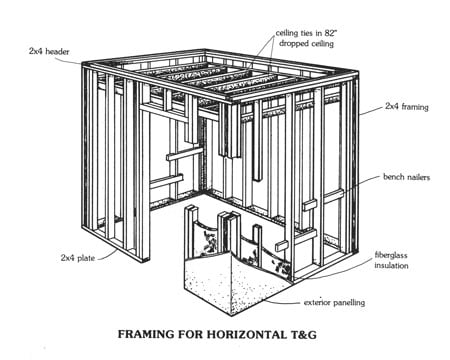
Plans
A genuine Finnish sauna rooms is relatively inexpensive, and it can be built to fit any space or surrounding. The size depends on the number of people likely to use it at the same time.
Benches
The top bench should be at least 20” wide and 36” from the floor. Benches are
placed on wall supports and legs if needed. 2” x 4” cedar with 1/2” space
between the boards is recommended. The cubic footage of sauna rooms is
very important in determining the capacity of the heating unit.
Ventilation
Ventilation in a sauna room is extremely important to achieve the utmost in satisfaction and pleasure. It will also speed up the reheating of the sauna rooms.
Lack of fresh air due to insufficient ventilation or poor management of ventilation can create an uncomfortable feeling. This often results in the symptoms of difficulty in breathing or burning of the skin.
The expanded hot air in the sauna contains proportionately less oxygen than the denser atmosphere outside. Bathers sometimes experience faintness unless the air is changed regularly. An amount of fresh air enters each time the door is opened; this is insufficient, however. Normally two ventilators are built into the walls.
The diagram shows the proper location of the vent openings. The inlet should be
located below the heating unit (or close to it) and the outlet is located on the opposite side, on the ceiling or just below the ceiling. Recommended ventilation openings are 4” to 6” diameter, depending on the size of the sauna rooms.
Planning your room size:Within reason, try to keep your room smaller rather than larger. After allowing for the depth of each bench, (typically 19" each) you should then plan on space for your heater, plus an area of 4" around the front, and two sides for the fence guard.
A smaller room will also permit using a smaller heater, smaller circuit breakers in your panel, and provide more efficient heating.
TIP: The upper and lower benches are the main components you will use to sit and lay down in the sauna. Remember that most sauna users like to stretch out on the upper and lower benches, so try to have the main bench wall 6 feet or longer.
Example: Let us plan a room 6 ft. x 5 ft. The 6-foot wall will allow one upper and one lower bench, each 6 feet long, ideal for laying down. The 5-foot (60") side wall space will be used up by: a) 20" wide upper bench, and b) 19" wide lower bench, leaving 21" of space for the heater and safety clearance. ..."perfect" (60" - 20" - 19" = 21")
Note: The ceiling height for a sauna can be from 6 1/2 to a maximum 7 feet high. Because heat rises, you want the benefit of the warmer air in the sauna while you are laying on the upper bench, so a ceiling height of 8 or 9 feet is going to defeat this, plus your heater will not function properly.
Heater size: Our room packages come pre-sized with the optimum sauna stove for the given cubic space (assume 7' ceiling).
Tip: you can install two heaters if you need to service a very large room in your home (i.e., over 450 cubic feet).
Planning the Sauna Room Layout:
-
Plan the size of your room - saunas can be virtually any size or shape. Hint: If you enjoy lying down in your sauna, allow 6' in at least one direction.
-
Plan the door location and direction of its swing. A sauna door MUST swing out of the room, not into the room. Hint: For a better layout of the benches, put your door and heater on a long wall next to each other, if possible.
-
Plan the location of your heater, preferably near the door wall. Remember that cool air will be naturally drawn from the door, along the floor to the heater where it will be heated and naturally rise to the ceiling.
-
Plan the bench layout: Our normal bench depth is 20"; height is either 36" (for the upper bench) or 19" high (for the lower bench). Custom sizes are welcome.
Hint: You will either sit or lie down in your sauna so include maximum benching as space permits; and note that the upper bench will be the warmer bench.

